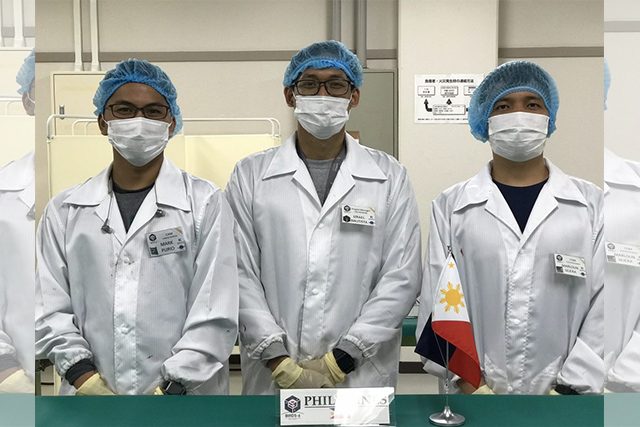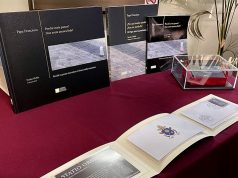
The opportunity to represent the country in the field of space science was the source of motivation for the three Filipino space engineers who developed the country’s second cube satellite.
The Department of Science and Technology shared the thoughts of these student-engineers Mark Angelo Purio, Izrael Zenar Bautista and Marloun Sejera on Facebook on Monday.
The 1U-sized cube called Maya-2 was launched into the International Space Station last February 21. It was joined by other cube satellites from Japan (Tsuru) and Paraguay (GuaraniSat-1) as they boarded the S.S. Katherine Johnson Cynus spacecraft.
For Bautista, the opportunity was a big deal for him and the country, citing the possibility of enhancing the Philippines’ space program.
“Nagkataon lang talaga na nabigyan ng opportunity pero malaking factor kaya ko rin tinanggap ay iyong long-term impact na mage-gain ng Pilipinas if we enhance our space programs, and with that, it is a great honor to be one of the pioneers in this field sa atin,” he said.
Sejera likewise described being part of this breakthrough as an “honor and privilege.” He also hoped that the Philippines can replicate how countries like Japan run their space programs in the future.
“To be honest, it is not difficult to accept the offer to be part of this project because it is an honor and privilege to pick the brains of the greatest experts and engineers abroad and witnessing firsthand how a country like Japan runs and implements its space programs that hopefully we can replicate here in the Philippines,” he said.
Purio, on the other hand, said, they were sent abroad to learn more about making cube satellite.
“Pinadala kaming tatlo, essentially para ma-train at matutunan namin ang paggawa ng cube satellite para in the long run, makapagdevelop na tayo ng sarili nating satellite rito sa Pilipinas and we can do that at a lower cost,” he said.
The three student-engineers were scholars at Kyushu Institute of Technology (Kyutech) under the Space Technology and Applications Mastery, Innovation and Advancement (STAMINA4Space) Program.
The STAMINA4Space Program is implemented by the DOST-Advanced Science and Technology Institute (DOST-ASTI) and the University of the Philippines Diliman.
A big step for Filipinos
When reports about Maya-2’s launch reached social media, some Filipinos mocked and jeered at it, citing its miniature size compared to other prominent satellites.
Filipino science enthusiasts, however, clapped back against the negative remarks.
They highlighted that a satellite developed by Filipino space engineers was a great achievement in the field of science and technology in the Philippines.
Unlike the known satellites that orbit Earth, Maya-2 and the other cube satellites are square-shaped with dimensions of 10cm × 10cm × 10cm and weigh only around 1 kilogram each.
Maya-2 is also an improvised version of Maya-1, which was decommissioned on Nov. 23, 2020.
Despite being small in nature, the Canadian Space Agency explained that cube satellites have important functions.
These are:
- Test commercial off-the-shelf components, as well as new technologies such as Perovskite solar cell and antenna using the satellite structure to prove their worthiness in space.
- Gather data from ground sensors for weather and infectious disease analysis.









